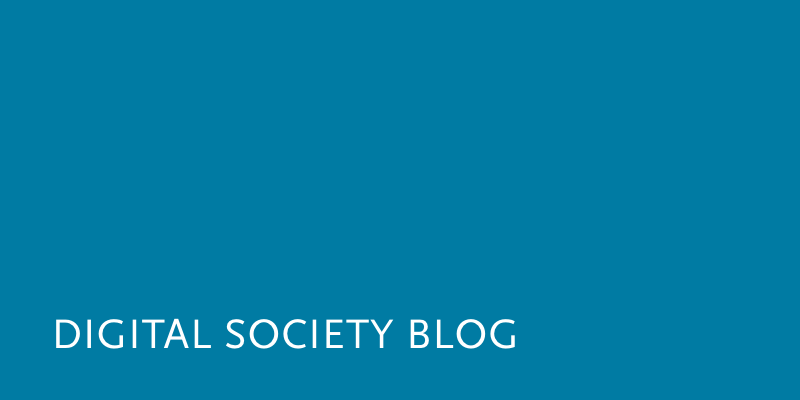Making sense of our connected world

The internet interconnection community has a hashtag problem. Let’s solve it!
Let me start off with a disclaimer: I am not a neutral bystander to the issue that this blogpost is about. I do research about the social glue that holds the internet together. In my work, I analyse how internet engineers manufacture internet connectivity, how they solve network problems, sometimes like firefighters, and also how they handle the disputes that occasionally lead to shutting down connections with other networks. So I have an interest in understanding the global community of networkers and how they communicate.
This blogpost is about non-communication. All kinds of professional groups use hashtags to have semi-public conversations on social media. Data journalists across the world communicate around #ddj (data driven journalism). Professionals for spatial analysis follow #gis(geo information system). Search for #oer and you will find a community of people who care about open educational resources. But where do you find the chatter about internet interconnection on Twitter, Facebook or Instagram? #Internetinterconnection? – Search harder. Out of all professional communities, the networker community is the last you would assume to lack a handy hashtag. But it’s true: the ones who have the longest track record of social networking on the internet – precisely because they created it! – they do not have a (functional) hashtag that works in today’s social media environment.
To be fair, this is a story of bad luck. Because in fact, the networker community does have a hashtag. This hashtag predates most social media platforms. It is #ix. #Ix for internet exchange – beautiful from an engineering point of view, because it is so short and efficient. The less you waste on metadata, the more you have for the payload. However, with the uptake of social media, this hashtag has become useless on general platforms. Search for #ix on Twitter and all you find is noise. #Ix is not unique enough. In the hashtag game networkers share the experience of early adopters: you benefit from features before anybody else does, but what you invested in is seldom compatible with future technical environments.
But, you may argue, perhaps networkers simply do not use Twitter or Facebook. Or they do not have common things to talk about. Ultimately, if there were a demand, there would be a hashtag, wouldn’t there? Is this blogpost the musings of a researcher in search of a problem? Well, it is true that internet interconnection professionals communicate through all sorts of communication channels – from email lists to IRC. But you can be sure that networkers use Facebook and Twitter as well. On this Twitter list for example, I compiled profiles of people who deal with internet interconnection professionally. (Feel free to notify me on Twitter @zielwasser about your own or other interesting profiles.) And if you take a closer look, you can trace networker’s attempts to form hashtag publics on Twitter. The volume of tweets marked with either #BGP (boarder gateway protocol), #peering, #routing, #IXP (internet exchange point), #IPv4 or #IPv6 is significant. All these things are aspects of internet interconnection. However, none of these hashtags works as an umbrella term. None of them captures the richness of the topics that play a role in this industry that is situated at the nexus of economy and technology.
So where do we go from here? In order for a hashtag to work, it needs to be short, memorable and distinctive. And the right people need to use it. Here are my suggestions:
- #poundix – When you hear networkers talk about their hashtag, this is what they will say. Probably the most intuitive for long-time networkers. My favourite.
- #ixchat – This hashtag literally performs its purpose: to create a common conversation around internet interconnection.
- #ixinfo – Similar to the hashtag above with emphasis on sending out info.
- #ix1992 – 1992 is the year when the first internet exchanges as we know them today started operations, think of MAE-East.
If you want to help solve the interconnection community’s hashtag problem, all you have to do is this: vote for your favourite hashtag here on Twitter and retweet the poll with your favourite hashtag. Also, feel free to add and discuss other suggestions in the comments. If things go well, a new hashtag will be born.
Photo: User: nina_pic / Flickr, CC BY-NC 2.0
This post is part of a weekly series of articles by doctoral canditates of the Alexander von Humboldt Institute for Internet and Society. It does not necessarily represent the view of the Institute itself. For more information about the topics of these articles and asssociated research projects, please contact info@hiig.de.
This post represents the view of the author and does not necessarily represent the view of the institute itself. For more information about the topics of these articles and associated research projects, please contact info@hiig.de.

You will receive our latest blog articles once a month in a newsletter.
Research issues in focus
The Human in the Loop in automated credit lending – Human expertise for greater fairness
How fair is automated credit lending? Where is human expertise essential?
Impactful by design: For digital entrepreneurs driven to create positive societal impact
How impact entrepreneurs can shape digital innovation to build technologies that create meaningful and lasting societal change.
Identifying bias, taking responsibility: Critical perspectives on AI and data quality in higher education
AI is changing higher education. This article explores the risks of bias and why we need a critical approach.




